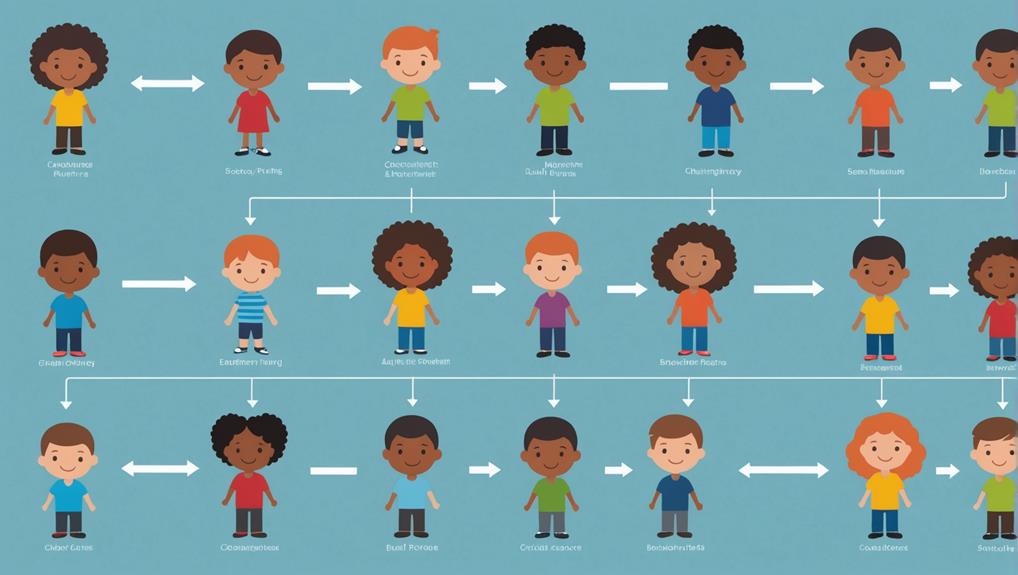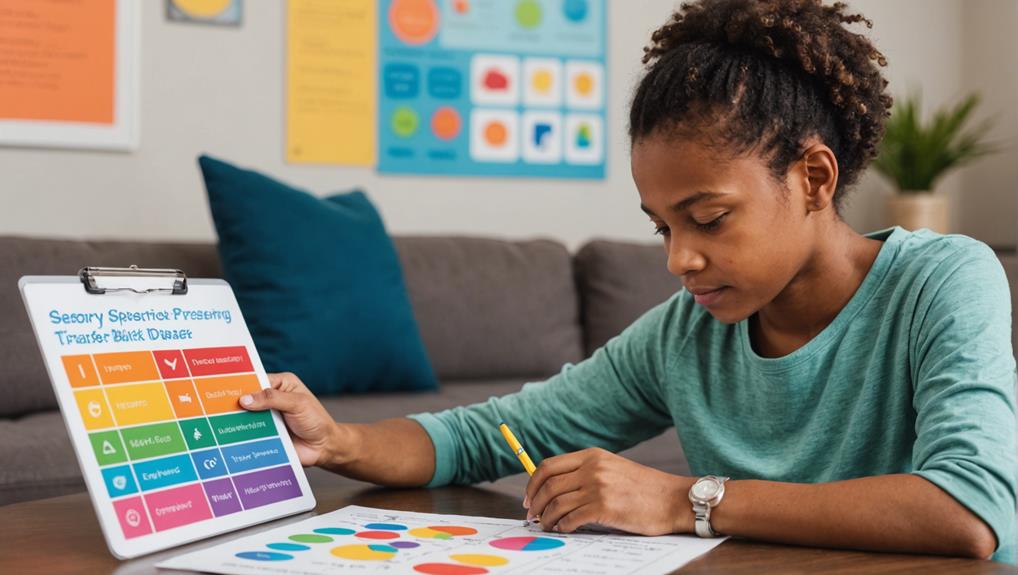What is sensory processing disorder? Many young parents feel confused and overwhelmed when their child struggles to handle everyday sights, sounds, or textures. Sensory processing disorder (SPD) affects how the brain interprets and responds to sensory input, making daily activities challenging. Understanding SPD is the first step in helping your child manage their world, and early intervention plays a crucial role in improving their development.
What is sensory processing disorder, and how can therapy help? As pediatric occupational therapists, we work with families in Tampa and beyond to provide support and practical strategies. By recognizing the signs and seeking help early, parents can confidently learn to guide their children through everyday challenges.
Key Takeaways
- Sensory Processing Disorder (SPD) affects all senses and disrupts the processing of sensory information.
- SPD encompasses three types: Sensory Modulation Disorder, Sensory-Based Motor Disorder, and Sensory Discrimination Disorder.
- Symptoms of SPD can manifest as hypersensitivity, hyposensitivity, or atypical behaviors, often misinterpreted as ADHD.
- Occupational therapy, including sensory integration therapy, is a primary method for treating SPD.
- SPD can impact daily family dynamics, routines, and relationships, necessitating tailored therapeutic interventions and strategies.
Understanding Sensory Processing Disorder
Although Sensory Processing Disorder (SPD) is not as commonly acknowledged as other neurological conditions, it plays a significant role in how the brain processes sensory information. This condition affects all senses, including vision, hearing, touch, taste, and proprioception. It shares some similarities with ADHD, as both can involve challenges with sensory integration. To comprehend SPD, we must recognize its complexity and the range of ways it can manifest in individuals.
Pediatric occupational therapy strategies, such as those used in ADHD management, often involve sensory integration techniques to help children improve focus and self-regulation. Proprioception, the sense of body movement and position, can be impacted in those with SPD, leading to coordination and spatial awareness difficulties. Similarly, interoception, which controls internal body activities, can be disrupted, affecting the perception of hunger, thirst, or the need for a restroom.
More commonly recognized senses like vision and hearing can also be impacted. A person with SPD may be over or under-sensitive to visual stimuli or struggle with filtering out background noise. The vestibular sense, related to balance and movement, can also be compromised, leading to issues with equilibrium.
Identifying SPD can be challenging due to the varied behaviors it can present. However, by understanding SPD and its diverse impacts, we can better assist those living with this disorder.
Recognizing Signs of SPD
Recognizing the signs of Sensory Processing Disorder (SPD) is vital for early intervention and effective management. Pediatric Occupational Therapists often utilize tailored sensory integration strategies to help manage this condition. This involves understanding the diverse symptoms, which may present as hypersensitivity, hyposensitivity, or atypical behaviors in response to sensory stimuli. Accurately interpreting these behaviors and their potential connections to SPD can prove challenging, given their varied manifestations. These strategies are essential in developing skills for enhanced attention, task completion, and managing responses to stimuli.
Identifying SPD Symptoms
A substantial portion of children diagnosed with Sensory Processing Disorder (SPD) often exhibit a complex array of symptoms, making it a challenging task to pinpoint the disorder. SPD can impact all senses, including vision, hearing, taste, smell, touch, proprioception, interoception, and the vestibular sense. These sensory challenges can lead to difficulties in developing sensory-based skills, adding to the complexity of identifying SPD symptoms.
Children with SPD may display:
- Hypersensitivity or hyposensitivity to sensory stimuli, leading to avoidance or craving of certain textures, sounds, or lights
- Emotional outbursts or overwhelmed reactions due to sensory issues are often perceived as tantrums or ‘bad behavior.’ Interestingly, similar emotional responses are also observed in conditions like ADHD, although the underlying reasons can differ.
- Varied behaviors can be misinterpreted as mere quirks or personality traits, masking the underlying sensory challenges. These behaviors can sometimes be mistaken for signs of ADHD due to the overlap in symptoms like difficulty focusing or impulsivity.
Recognizing these signs is crucial in identifying SPD symptoms and ensuring early intervention. It’s essential to remember that these children are not ‘misbehaving’ – they are simply trying to navigate a world that can often feel overwhelming. By understanding and recognizing these symptoms, we can better support these children in their path, fostering a more inclusive and understanding environment for them to thrive in.
Understanding SPD Behaviors
After identifying SPD symptoms, developing a deeper understanding of SPD behaviors is imperative. Children with SPD can exhibit a range of behavioral issues, often stemming from either hypersensitivity or hyposensitivity to sensory stimuli. They may seem overly reactive or unresponsive to sensory events that most people find tolerable or enjoyable.
Similar to ADHD, which also involves sensory processing difficulties, the behaviors exhibited by children with SPD can be complex and varied. Furthermore, interventions such as Sensory Integration Therapy, commonly used in ADHD care, can also be beneficial for managing SPD.
These behaviors can be puzzling and challenging to decipher, as SPD affects all senses: vision, hearing, smell, taste, touch, proprioception, interoception, and the vestibular sense. This broad sensory impact results in various behaviors that may seem unrelated but are rooted in sensory processing difficulties.
In addition, different types of SPD, such as sensory modulation disorder, sensory-based motor disorder, and sensory discrimination disorder, can present with distinct behaviors. For example, a child with sensory modulation disorder may exhibit intense emotional outbursts, while one with sensory-based motor disorder might face challenges with movement and coordination.
Understanding these behaviors and their underlying causes is the initial step toward helping children with SPD navigate their sensory world more comfortably and effectively.
Types of Sensory Processing Disorder

Exploring sensory processing disorders reveals their multifaceted nature. These conditions can present themselves in various areas and are generally grouped into three primary types: Sensory Modulation Disorder (SMD), Sensory-Based Motor Disorder (SBMD), and Sensory Discrimination Disorder (SDD).
While unique, these types often overlap, leading to a specific symptom profile for each child. Much like the ADHD routines that are personalized to each child’s needs, understanding these distinct SPD profiles is vital.
- Sensory Modulation Disorder (SMD) is characterized by either an excessive or reduced reaction to sensory inputs. Children with SMD may display unusual behaviors, such as craving or avoiding specific sensory experiences.
- Sensory-Based Motor Disorder impacts a child’s balance and motor skills. Kids with SBMD often have difficulty with coordinated movement, and their ability to physically interact with their environment might be significantly hindered.
- Sensory Discrimination Disorder results in difficulty processing sensory inputs, making perceiving and responding appropriately to the environment challenging.
Recognizing the diversity of sensory processing disorders is essential for communities aiming to serve and understand these children better. This understanding enables the development of more effective, tailored strategies to support their growth and well-being.
Impact of Senses on Development
The critical role of senses in well-being growth cannot be underestimated, as they provide the foundation for understanding and interpreting one’s environment. When Sensory Processing Disorder (SPD) is present, this fundamental processing of sensory information is disrupted, leading to potential delays in developing vital sensory-based skills. Consequently, addressing these sensory processing issues is essential to facilitating the best skill development and enhancing overall well-being.
Sensory Roles in Growth
Well-being plays a fundamental role in the progression of childhood development, primarily through the facilitation of understanding and exploring the surrounding environment. Sensory input is vital as it aids children in object recognition, sound interpretation, taste identification, and sensation perception. However, with Sensory Processing Disorder (SPD), this sensory information is processed differently, potentially hindering a child’s development.
The impact of sensory roles in growth can be categorized into three major areas:
- Understanding the environment: Sensory input allows children to interpret the world around them, forming the foundation for acquiring knowledge and developing cognitive abilities.
- Interaction with surroundings: Sensory input enables children to react appropriately to stimuli, aiding in developing social skills and behaviors.
- Physical development: Sensory input aids in developing motor skills by understanding the body’s interaction with the environment.
Addressing sensory processing issues can significantly help with skill development and overall growth. Parents and caregivers must understand the importance of sensory roles in growth and how SPD might affect these roles. By doing so, they can better support children with SPD in their developmental path.
Sensory Delays and Skills
Sensory integration plays a pivotal role in a child’s development, shaping their understanding of their surroundings. How children process sensory information significantly impacts their perception of the environment and their place in it. This processing is often different for children with Sensory Processing Disorder (SPD), leading to changed perception and sensation and, subsequently, sensory delays.
Sensory delays delay the development of sensory-based skills such as object recognition and sound interpretation. These delays can affect a child’s ability to interact effectively with their environment and impact their overall growth and development.
Understanding these sensory delays and the skills affected is essential in supporting children with SPD. Addressing these sensory processing issues can aid in skill development and overall growth, providing these children a better opportunity to navigate their world.
| Sensory Issue | Impact | Resolution |
|---|---|---|
| Object Recognition | Difficulty in identifying objects and their purpose | Use of sensory integration therapy |
| Sound Interpretation | Trouble in processing and understanding sounds | Use of auditory therapy |
| Sensory Processing | Changed perception and sensation | Tailored therapeutic interventions |
This knowledge is invaluable for those who wish to serve these children, providing a foundation for practical support and care.
Approaches to Address SPD

Numerous treatment methods have been developed to address Sensory Processing Disorder (SPD), with occupational therapy (OT) emerging as a primary method. OT aids children in adjusting to sensory input, developing motor skills, and enhancing self-regulation, thereby improving their capacity to engage in daily activities.
One key tactic within OT is sensory integration therapy, a play-based activity that encourages appropriate responses to sensory stimuli. This therapy is based on the belief that guided exposure to sensory inputs can assist children with SPD in developing suitable reactions over time.
To effectively tackle SPD, it’s crucial to embrace a personalized approach. This is because each child experiences SPD differently. A one-size-fits-all approach is, therefore, not adequate. Instead, parents and caregivers should consider the following essential factors:
- It is partnering with a reputable service provider like MySpot Care, recognized for its customized services for children with SPD.
- The significance of play-based activities in sensory integration therapy.
- A personalized care plan is necessary to cater to each child’s sensory requirements.
Initiating Sensory Processing Disorder with Occupational Therapy
Commencing the procedure of SPD occupational therapy marks a significant stride towards confronting and conquering sensory processing challenges that children may encounter. This tailored form of intervention targets the core of SPD, striving to enhance a child’s capacity to process sensory information efficiently.
Occupational therapists play a crucial role in this process. They evaluate the child’s distinct requirements and devise personalized care plans. These plans are crafted to foster progress and achievement, concentrating on cultivating vital skills that children with SPD may find demanding.
Such occupational therapy sessions utilize various methods, including sensory integration therapy, which aids children in reacting suitably to sensory stimuli. The aim is to empower children with the skill to process sensory inputs more effectively, enabling them to maneuver their surroundings more comfortably.
Organizations like MySpot Care offer specialized services for children with sensory processing disorder (SPD). They provide a structured yet adaptable approach, merging evidence-based strategies with inventive techniques to tackle SPD issues. To sum up, embarking on SPD occupational therapy is crucial to ensuring a more harmonious and gratifying life for children with SPD.
Parental Experiences With SPD

Exploring the path of Sensory Processing Disorder as a parent is a distinctive experience filled with challenges and triumphs. It is critical to delve into these individual stories to shed light on the realities of managing SPD and the strategies that have proven effective in overcoming obstacles. This segment will focus on parental accounts, highlighting the journey to understanding and supporting a child with SPD.
Personal SPD Journey
As the terrain of pediatric health evolves, parental experiences with Sensory Processing Disorder (SPD) emerge as invaluable narratives, painting a vivid picture of the daily realities and challenges. Navigating the intricacies of SPD is a voyage distinct to each family, yet shared narratives offer a guiding light of hope and comprehension amid adversity.
These individual odysseys, often characterized by resilience and adaptation, provide a compelling insight into the experiences of families grappling with SPD. Here are three such stories:
- One parent shares the heartfelt toll of the initial diagnosis, the struggle to comprehend the disorder, and the subsequent quest to find effective strategies.
- Another tale unveils the triumph of small victories, such as the child’s inaugural successful interaction in a sensory-overloading environment.
- A different account underscores the vital role of a supportive community, highlighting the comfort of shared experiences and mutual understanding.
These anecdotes form the backbone of a parent’s guide to sensory challenges, offering heartfelt support, practical advice, and a sense of camaraderie to those traversing similar paths. Through these unique journeys, we gain a deeper understanding of SPD, reinforcing the need for empathetic and informed approaches in pediatric health.
Overcoming SPD Challenges
The experiences of parents raising children with Sensory Processing Disorder (SPD) are filled with personal challenges and specific triumphs. Daily struggles range from understanding the nuances of the disorder to managing different therapies, school settings, and social interactions. However, these challenges often lead to victories as parents learn to advocate effectively for their children, fostering an environment where they can thrive.
One key aspect of overcoming SPD challenges is learning from other parents who have walked a similar path. Their insights can help you help your child learn and develop coping strategies tailored to their sensory needs. Moreover, these shared experiences emphasize the importance of building a solid support system for both the child and the parents.
Awareness-building is another essential component in overcoming SPD challenges. This involves understanding the intricacies of SPD and advocating for appropriate resources and accommodations in different settings. By doing so, parents can guarantee their children with SPD receive the necessary support, promoting their overall well-being.
Impact of SPD on Families
Understanding the impact of Sensowellbeingsing Disorder (SPD) on families requires a thorough exploration of the daily challenges and changes in dynamics these families often face. A child with sensory processing sensitivities usually dictates the tempo of family life, altering routines and activities. This constant navigation can strain family relationships and create a sense of isolation, especially for parents seeking resources and support.
The personal toll on families is profound. Consider the following poignant scenarios:
- Parents, in their quest to support their child’s sensory needs, experience heightened stress, often feeling misunderstood by those outside their immediate family circle.
- Siblings must adjust their behavior and activities to accommodate their sibling’s sensory preferences, which can result in feelings of resentment or confusion.
- The family home becomes a tailored environment to support the child’s sensory needs, which can disrupt the harmony of family life.
SPD’s impact on families is multifaceted, extending to the child with the disorder. This does multifaceted the love and commitment families have for their children, but it underscores their daily challenges.
Helpful Recommendations for SPD

Traversing the challenging terrain of Sensory Processing Disorder necessitates more than just understanding its impact on families. It also requires practical strategies to support children with SPD. One such approach is pediatric occupational therapy, an intervention that aids children with SPD in managing their responses to sensory stimuli and fostering motor skills development.
Sensory integration therapy, another effective strategy, involves engaging children with SPD in play-based activities. This therapy targets sensory modulation disorder, a condition common in children with SPD, where there is an over- or under-responsiveness to sensory inputs.
Beyond therapeutic interventions, everyday adaptations can also be beneficial. For instance, providing choices for sensory needs can strengthen children with SPD, giving them a sense of control. This can range from choosing their clothing materials to deciding the light level in their rooms.
Overall Satisfaction With SPD Resources
Numerous positive reviews underscore the significant value of available SPD resources. Parents, grandparents, and teachers have all appreciated the practical tips and advice provided within these resources. The feedback has highlighted the functionality and clarity of the Sensory Processing Disorder resources, as they offer a thorough understanding of SPD for persons interacting with children affected by this disorder.
- Readers have found this Guide to Sensory Processing pivotal in managing and supporting children with SPD. The information is described as advantageous and illuminating, leading to improved understanding and care for affected children.
- Occupational therapists, for example, have recommended the SPD resources, adding credibility and trustworthiness to the information provided. This professional endorsement has significantly increased satisfaction and reliance on the resources.
- The resources have been praised for their detail and precision, making the intricate topic of SPD accessible and manageable for those who seek to serve children with SPD.
Treatment Options for Sensory Processing Disorder

Frequently Asked Questions
What Is Sensory Processing Disorder in Simple Terms?
Sensory Processing Disorder is a neurological condition in which the brain struggles to process sensory information correctly. This can result in over- or under-responsiveness to sensory stimuli, affecting a person’s interaction with their environment.
What Is the Root Cause of Sensory Processing Disorder?
Sensory Processing Disorder originates from the brain’s difficulty processing sensory information. This can be due to genetic factors, environmental influences, or neurological differences, and it is further influenced by prematurity, toxin exposure, or family history.
What Is SPD?
Sensory Processing Disorder (SPD) is a neurological condition that affects how the brain processes sensory information from different senses, leading to challenges in performing everyday tasks due to over or under-responsiveness to stimuli.
How Do You Explain Sensory Processing Disorder to Parents?
Sensory Processing Disorder (SPD) is a neurological condition in which the brain struggles to interpret sensory information correctly, resulting in over- or under-responsiveness. This can impact behavior, motor skills, and daily activities. Early recognition and professional support are instrumental in managing SPD.
Conclusion
In conclusion, what is sensory processing disorder, and how can early help make a difference? SPD can affect a child’s growth and daily life, but the good news is that with early intervention and the right therapy, children can thrive. Understanding sensory processing disorder allows parents to act and support their child’s unique needs.
By seeking help early, you give your child the best chance for success. With the support of caring therapists and practical strategies, children with SPD can gain confidence and independence in their everyday lives.


Recent Comments